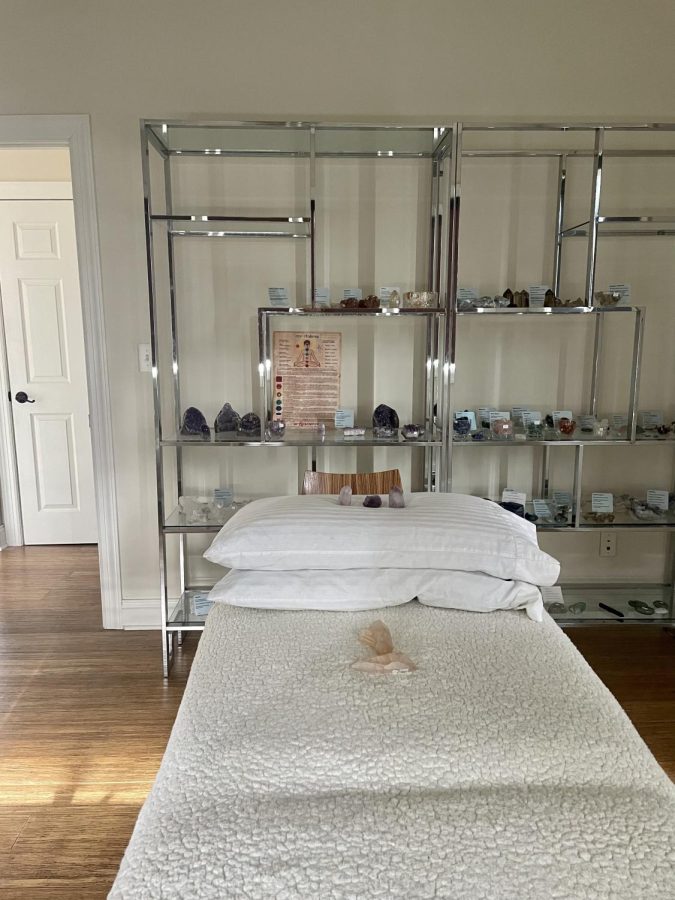Reiki: A modern guide to healing and spirituality
Photo courtesy of Jen Heflin
Local Reiki Master Jen Heflin’s work space
“Reiki is difficult to explain but easy to experience,” said local Reiki Master Jen Heflin while sitting outside the room where she engages in an energetic conversation with her clients. Soft music plays in the background, with scents of rose and incense filling the empty space. Her words are selective; there is a certain delicacy in describing the journey that can offer someone a more “expansive understanding” of themself and the world around them.
According to clevelandclinic.org, Reiki is a healing technique commonly used through touch to relieve stress and anxiety. It’s practiced on patients suffering from serious physical illnesses, though it is not considered a medical replacement for the treatment of a doctor.
Dating back to the early twentieth century, Reiki offers a relatively modern approach to healing compared to others associated with ancient religions. That said, Reiki is not a religion but rather an interaction of energy. It involves the examination and “clearing” of different chakras or focal points of energy across the human body. In a general understanding, Reiki combines meditation strategies with the idea that physical healing stems from initial, inner healing.
Over time, Reiki has accumulated a following of “students,” but its global prevalence is still wavering. However, New Jersey hosts a popular center for students and clients to gather in their practice. Sema Tihan founded the Reiki Healing Center of NJ after having her spiritual discovery. Over the past ten years, she has opened up to a global audience with visitors, and virtual participants, from different hemispheres in search of a greater “cosmic understanding.”
With no particular religious experience growing up, and a perpetual feeling of insight beyond the natural world since her earliest memories, Tihan was led to Reiki first through education. Her original career as an engineer allowed her to study aspects of the world at a quantum level, which eventually guided her discovery of Reiki. Tihan approaches her practice as a “scientist at heart” with a curiosity that she hopes can spread to her clients. She claims that curiosity leads to exploration, and exploration of Reiki ultimately leads to the “exploration of ourselves.”
At WHS, junior Grace Lisnock is attuned, meaning she is just as certified as a Reiki Master at 16 as people like Tihan and Heflin. In both Lisnock’s spiritual and healing preferences, Reiki is a practice best received by her body when it is a function of her touch, as opposed to somebody else’s. She finds it natural to intuitively respond to her body and give herself Reiki, saying it can sometimes be as simple as “placing your hand on your head in a crowded room” to alleviate her anxiety.
As an active member in the youth ministry program at the Parish of St. Helen here in Westfield, it may seem odd to some that Lisnock, a practicing Catholic, also aligns with the values of Reiki. However, Reiki is a purely secular process, and its spiritual benefits are just as appealing to a religious client as anyone else. Lisnock finds comfort in the idea that there is “larger power in existence and we are not just our physical bodies.”
Lisnock is also a student-athlete on the WHS cross country team, noting that taking care of energy can target adverse physical effects of competitive sports, which is a “first step toward physical health, and a cleansing of one’s spiritual aura.”
From the walls of WHS to the faraway homes of Tihan’s virtual patients, Reiki reaches those curious enough to explore it and offers a shift from traditional healing methods into a realm that remains undefined.

